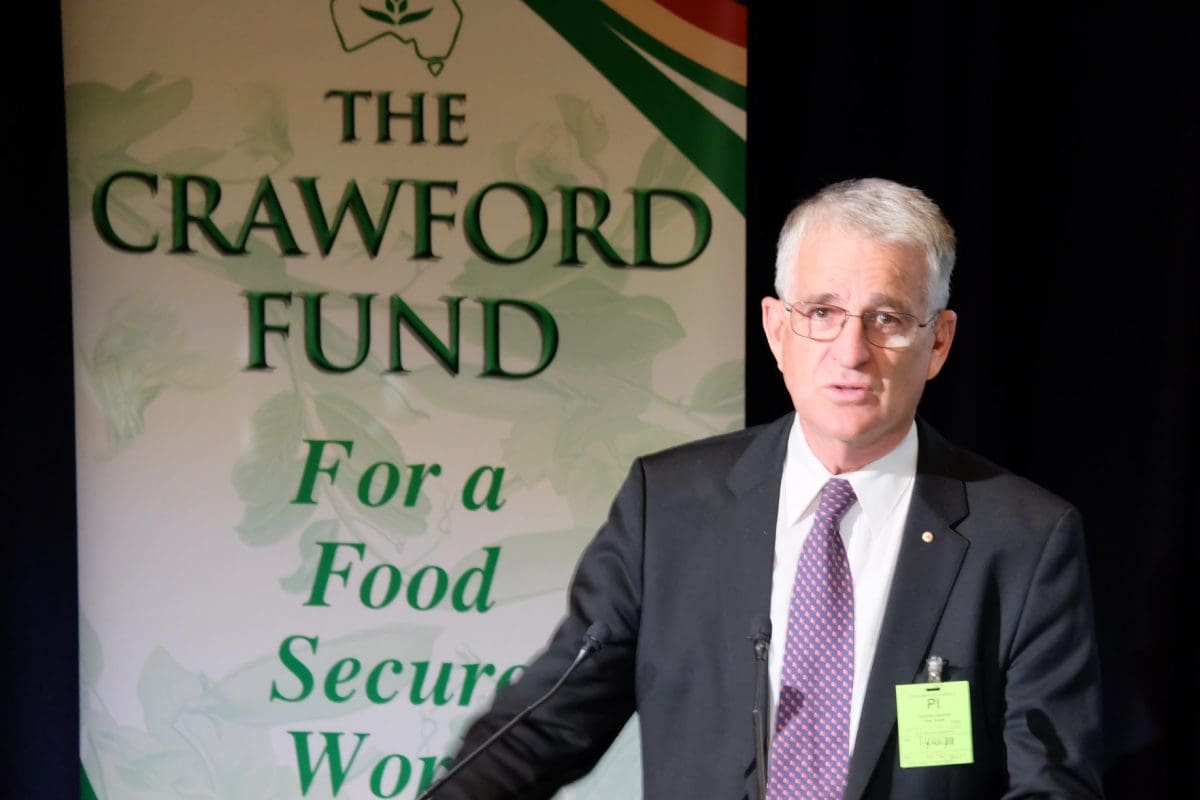THE COVID-19 pandemic has been a wakeup call for Australia’s aid policy to focus on the overlap between agriculture, health and the environment, and invest more where there is risk of future pandemics, according to Australia’s international agricultural research and development body, the Crawford Fund.
Australia’s recent aid policy response to COVID-19 provides an opportunity to do this.
This was the message of two former senior politicians, John Anderson and Craig Emerson, who now sit on the board of the Crawford Fund, an NGO that engages Australians to train developing country scientists and farmers to improve food and nutrition security.

John Anderson
They believe Australia could be a global leader in boosting aid efforts where the health of people, animals and the environment are interconnected.
They say this so-called ‘One Health’ approach is warranted, since it appears COVID-19 and SARS came from animals being in close contact with humans in food chains, such as wet markets. At the same time, this helps protect Australia from emerging diseases.
Australia’s biosecurity issues include devastating pests and diseases such as Fall Army Worm, Panama Disease and fire ants which have already arrived in the country, and working to keep out threats such as African Swine Fever that wipes out pig populations and has already severely affected East Asia.
Mr Anderson, who is a former Deputy Prime Minister and is now chair of the Crawford Fund, said agriculture was at the critical interface of food, health and the environment and was an obvious place from which to work.
“Australia’s agricultural aid to our neighbours, which brings a benefit to Australian agriculture of $10 for every dollar spent, could deepen its benefit to our neighbours and to us with more funding for an integrated focus on health, agriculture, food and environment,” he said.
“The so-called ‘One Health’ approach is warranted, since it appears COVID-19 and SARS came from animals being in close contact with humans in food chains, such as wet markets.”
Minimising future risk
In an opinion piece written with Dr Emerson and the Fund’s chief executive officer, Dr Colin Chartres, Mr Anderson said that with an increasing human footprint, the risk of future pandemics due to diseases jumping across the species barrier similarly increases.
“The ‘One Health’ approach is gaining traction as it enables the collaboration needed across different sectors and disciplines, working at the local, regional, national, and global levels,” he said.
“Australia could be a global leader in efforts to stave off further pandemics by investing more in research to cover the overlap of agriculture with health and the environment, whilst at the same time helping protect Australia from emerging diseases.”
Examples of some ‘One Health’ work underway include research on anti-microbial resistance, food safety, policy improvements to veterinary legislation, biosecurity around threatening pests and diseases, and work to gain a better understanding the risk factors of animal to human disease transmission.
“Australia gains immense kudos and benefit from its contribution to international agricultural research, development and extension. The impact would be further increased if we boost efforts to include a ‘One Health’ integrated focus on health, agriculture, food and environment, as part of our current agricultural aid,” Mr Anderson said.
Source: Crawford Fund

HAVE YOUR SAY